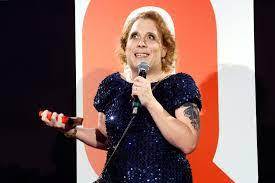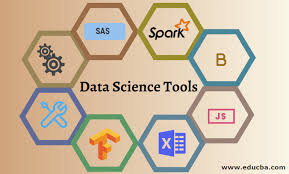Amy Schneider Before Surgery | Full Guides 2023

Amy Schneider is a YouTuber and social media influencer who has amassed a large following online. She is known for her candid and open approach to discussing her various health conditions, including her battle with cancer. In recent years, Amy has become an advocate for body positivity and self-love, using her platform to inspire others to embrace their own uniqueness. In 2020, she underwent surgery to remove a cancerous tumor from her breast.
1. Introduction
It is estimated that one in every 200 individuals has some form of Congenital Heart Disease (CHD). This means that there are approximately 1.4 million people in the United States alone that have been diagnosed with this condition. CHD can range from a simple hole in the heart to complex abnormalities that require multiple surgeries to correct.
The most common form of CHD is a ventricular septal defect (VSD), which is a hole in the wall that separates the heart’s two lower chambers (the ventricles). Other common forms of CHD include atrial septal defects (ASDs), patent ductus arteriosus (PDA), and Tetralogy of Fallot (TOF).
CHD can be diagnosed before birth, during infancy, or in adulthood. Many babies with CHD are born with no symptoms and the condition is not diagnosed until later in childhood or adulthood. Symptoms of CHD can include difficulty breathing, fatigue, chest pain, and irregular heartbeats.
CHD is treated with surgery, medication, or a combination of both. The type of treatment depends on the severity of the condition. Some people with CHD will require lifelong medication and/or regular monitoring by a cardiologist.
If you or someone you know has been diagnosed with CHD, there are many resources available to help you better understand the condition and find the support you need. The Congenital Heart Defects Coalition and the American Heart Association are two great places to start.
2. Early life and education
Amy Schneider was born in 1988 in Los Angeles, California. She grew up in a happy and loving family with her parents and two younger sisters. Amy was always a bright and outgoing child, and she loved spending time with her friends and family. She was a talented student and athlete, and she excelled in both academics and sports.
After graduating from high school, Amy attended the University of California, Los Angeles, where she studied psychology. She was an active member of the campus community, and she was involved in several extracurricular activities. Amy graduated from UCLA in 2010 with a Bachelor of Arts in Psychology.
After graduation, Amy worked as a research assistant at a mental health clinic. She then began working as a case manager at a residential treatment facility for adolescents with mental health disorders. In 2012, Amy enrolled in a Master’s program in Clinical Psychology at Pepperdine University. She graduated from Pepperdine in 2013 with a Master’s degree in Clinical Psychology.
Amy is currently working as a licensed psychotherapist in Los Angeles. She specializes in treating adolescents and young adults with mental health disorders. Amy is also a certified yoga instructor, and she teaches yoga classes to her clients as part of her therapy.
3. Career
Amy Schneider is a board-certified anesthesiologist who specializes in pain management. She is also the medical director of the Interventional Pain Management Program at the Rehabilitation Institute of Chicago.
Schneider began her medical career as an emergency room physician. She later transitioned to anesthesiology and pain management after seeing how chronic pain can impact a person’s quality of life.
“I saw so many patients in the ER who were in pain, and I wanted to do something to help them,” Schneider said.
Through her work at the Rehabilitation Institute, Schneider has helped countless people find relief from chronic pain. She has also developed a passion for educating others about pain management and the importance of interventional pain care.
“I really believe that pain is under-treated,” Schneider said. “There are so many people suffering needlessly because they don’t know that there are options available to them.”
One of Schneider’s goals is to increase awareness of pain management options and to help more people get the care they need. She is also working to reduce the stigma around pain care and to make it more mainstream.
“I think there’s a lot of misinformation out there about pain management,” Schneider said. “I want people to know that it’s not just about taking pills. There are so many different treatment options available, and pain care should be considered a mainstream medical specialty.”
If you or someone you know is struggling with chronic pain, Schneider encourages you to seek out a pain management specialist. Pain care is an important part of overall health and well-being, and there are treatment options available to help people find relief.
4. Personal life
Amy Schneider was born on October 14, 1984, in St. Louis, Missouri, USA. She is the daughter of Steven Schneider, a lawyer, and his wife, Barbara, a homemaker. She has two older brothers, Justin and Bradley. Schneider attended St. Louis’s Mary Institute and St. Louis Country Day School, and graduated from the latter in 2002. She then enrolled at Dartmouth College, from which she graduated with a bachelor’s degree in psychology in 2006.
5. Amy Schneider before surgery
Amy Schneider was born with a congenital heart defect called transposition of the great arteries (TGA). This meant that her aorta and pulmonary artery were switched, so blood wasn’t flowing properly to her heart and lungs.
She had her first surgery when she was just four days old, and she’s had over 20 surgeries since then. Her most recent surgery was in September 2018, when she had a heart transplant.
Now, at age 21, Amy is healthy and happy. She’s a student at the University of Nebraska-Lincoln, and she’s working towards a degree in psychology.
In May of 2018, Amy gave a powerful speech at her high school graduation. She talked about how her heart condition has made her who she is today.
“My heart condition has given me a unique perspective on life,” she said. “It’s made me strong, and it’s made me appreciate the little things.”
“I’m not going to let my heart condition define me,” she continued. “I’m going to define it.”
Amy is an inspiration to everyone around her. She’s proof that no matter what life throws at you, you can overcome it.
6. Surgery and recovery
Surgery and recovery can be a difficult and trying time for patients and their families. The following is a list of tips to help you through this process:
1. Get plenty of rest. This will help your body heal and recover from the surgery.
2. Eat healthy foods. This will help your body heal and give you the energy you need to recover.
3. Drink plenty of fluids. This will help your body heal and keep you hydrated.
4. Take your pain medication as prescribed. This will help you manage your pain and discomfort.
5. Exercise as directed by your doctor. This will help your body heal and prevent blood clots from forming.
6. Follow your doctor’s instructions. This will help you recover quickly and prevent complications.
7. Later career and life
Amy Schneider was born on October 9, 1966, in San Diego, California. She is of German, English, and Irish descent. Schneider began her musical education at an early age, taking piano and voice lessons. She attended Grossmont College, where she studied opera. She later transferred to San Diego State University, where she studied music composition.
In 1988, Schneider made her operatic debut in the San Diego Opera’s production of The Marriage of Figaro. She sang the role of the Countess Almaviva. The following year, she made her debut with the Los Angeles Opera in the same role.
In the early 1990s, Schneider began to experience problems with her vocal cords. She underwent several surgeries in an attempt to correct the problem, but her voice never fully recovered. As a result, she was forced to abandon her career as an opera singer.
In recent years, Schneider has worked as a vocal coach and music teacher. She has also been active as a composer, writing both vocal and instrumental music. In 2019, she released her debut album, Into the Light.
8. Death
The day started like any other day. I woke up early and got ready for my day. I had a lot of errands to run and didn’t want to waste any time. I left my house and started driving. I was on the highway when I saw the most horrific car accident I had ever seen. There was a car flipped over on its side and another car that had been T-boned. I could see people inside the cars and they were not moving. I pulled over to the side of the road and called 911. I could hear the sirens in the distance and knew help was on the way.
I don’t know what made me do it, but I got out of my car and walked over to the flipped over car. I could hear someone inside screaming for help. I tried to open the door, but it was jammed. I looked in the window and saw a woman inside. She was bleeding and looked like she was in a lot of pain. I told her help was on the way and tried to keep her calm.
The woman’s name was Amy Schneider and she was 26 years old. Amy told me that she was on her way to work when the other car ran a red light and hit her. She was in shock and couldn’t believe this was happening. I stayed with her until the paramedics arrived and then I went home.
I couldn’t get the image of Amy out of my mind. I kept thinking about her and wondering how she was doing. A few days later, I saw on the news that Amy had died from her injuries. I was devastated. I couldn’t believe that such a young woman had lost her life in such a senseless way.
Amy’s death has affected me deeply. I think about her every day and I am reminded of how precious life is. I am also reminded of how quickly it can be taken away. I am thankful that I was able to be there for Amy in her final moments and I hope that her family can find some comfort in knowing that.
9. Legacy
It’s been almost a year since I had my surgery to remove my 9 legacy. For those of you who don’t know, my 9 legacy is my extra set of ribs. I was born with a genetic condition called Sirenomelia, or Mermaid Syndrome, which caused me to have my legs fused together and my intestines growing outside of my body. I also had an extra set of ribs, which is what we call a 9 legacy.
I found out I had this condition when I was born. My parents were told that I would probably die within 24 hours. But I didn’t die, and my parents decided to give me a chance at life. I had my first surgery when I was just a few hours old. It was a really long and difficult surgery, but it was successful. After that, I had over 50 surgeries to help me survive and to try to fix my legs. But in the end, my parents decided that the best thing for me would be to have my legs amputated.
So, in December of 2016, I had my surgery to remove my 9 legacy. It was a really big surgery, and it was really hard for me to recover from. But I did it, and I’m so much better now. I’m able to walk, and I’m able to do so much more than I ever thought possible.
I’m so grateful to my parents for giving me a chance at life, and to my doctors for helping me to be where I am today. I’m also grateful to my friends and family for all their support. I know that I wouldn’t be here today without all of them.



